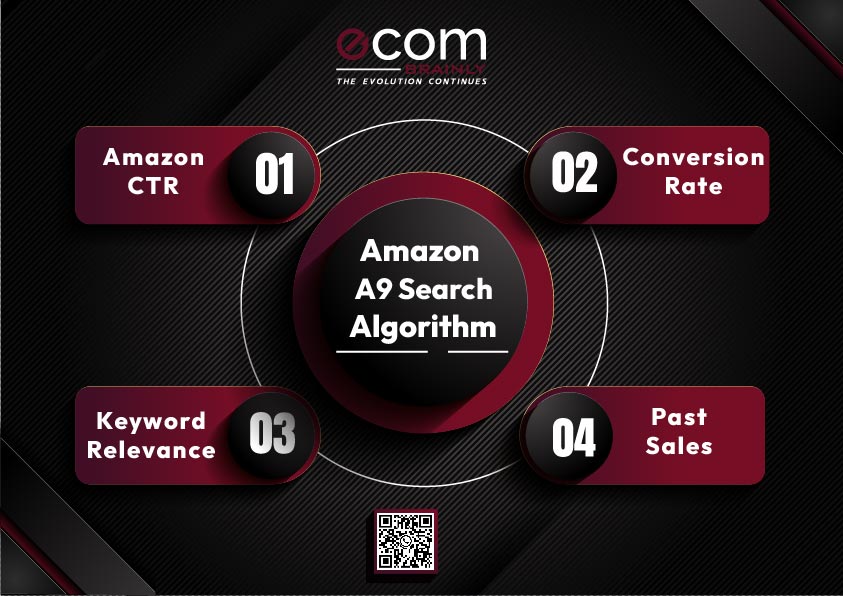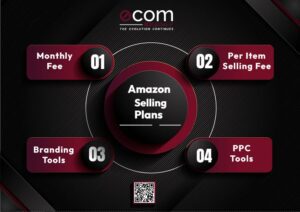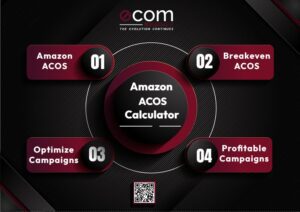Have a great time reading this blog.
Ready to see how our team can grow your Amazon brand? Click Here
Have a great time reading this blog.
Ready to see how our team can grow your Amazon brand? Click Here
Amazon A9 Algorithm and How It Ranks Keywords: A Comprehensive Guide

Introduction
Amazon search algorithm, a complex mechanism designed to match customers queries with products they’re most likely to purchase.
Unlike traditional search engines that cater to a broad range of queries, the A9 amazon search engine focuses exclusively on optimizing the shopping experience.
Achieving a higher position in Amazon’s search results means connecting with millions of potential buyers. The Amazon ranking algorithm plays a critical role in this process, analyzing different factors to list products in an order that maximizes the likelihood of sales.
Evolution of Amazon A9 Algorithm
1. Small Beginning to Market Dominance
The journey of the Amazon A9 algorithm mirrors the transformative path of Amazon itself, evolving from a simple online bookstore to a giant in e-commerce it is today.
Initially, the Amazon search algorithm was straightforward, focusing primarily on matching keywords in product titles and descriptions to customer queries.
However, as the marketplace grew, so did the complexity of how products were ranked and presented to potential buyers.
2. A9's Leap into Sophistication
Over the years, the Amazon algorithm has undergone significant changes, incorporating advanced machine learning and artificial intelligence to better understand and predict consumer behavior.
This evolution marked a shift from basic keyword matching to a more complex approach that considers a multitude of factors, from customer reviews to sales history, ensuring that the Amazon product ranking algorithm aligns more closely with the likelihood of sales.
Amazon A9 Algorithm Key Ranking Factors
The Amazon A9 algorithm is a system that examines various elements to determine how a product should be ranked for a specific keyword. It’s crucial to understand what these factors are and how they can be enhanced.
1. Organic Sales
One of the most important factors for ranking a product on Amazon is its ability to sell well on its own, without relying on paid advertisements.
This aspect of sales, known as organic sales performance, is highly valued by Amazon’s product ranking algorithm.
The a9 Amazon search engine algorithm considers these organic sales as a strong signal of a product’s popularity and relevance among customers. As a result, Amazon is more likely to rank such products higher in search results.
How to Improve Organic Sales?
Optimize product listings with high-quality images, and SEO optimized listing content. Improve the keyword ranking of important keywords with Amazon Sponsored Products campaigns.
2. Click-Through Rate (CTR)
In 2024, Click-Through Rate (CTR) has become a very important factor, showing how appealing your product listings are from the search results page.
A higher CTR means that more people are clicking on your product after seeing it in the search results. This tells the Amazon search algorithm that your product is something customers are interested in.
This is crucial because Amazon wants to show products that people are likely to buy.
How to Improve CTR?
To boost your Click-Through Rate (CTR), focus on improving your main image, product title, price, and gather positive reviews and ratings.
3. Keyword Relevance
The relevance of your product to customer queries, determined by the strategic use of keywords in your listing, remains a critical factor. The A9 amazon search engine prioritizes products that closely match the shopper’s search intent.
How to Improve Relevance?
Conduct thorough keyword research to identify both high-volume and long-tail keywords relevant to your product.
Incorporate these keywords naturally into your product title, bullet points, and description and regularly update your product listing with new keywords.
4. Product Pricing
Competitive pricing can significantly impact your product’s ranking. The Amazon search ranking algorithm favors products priced attractively compared to similar offerings, as this can influence click-through rare and conversion rates directly.
How to Improve?
Monitor competitor pricing and adjust your prices to remain competitive without undercutting your profit margins.
5. Product Availability
Keeping the right amount of stock is very important, where the Amazon A9 algorithm can lower the position of listings that often run out of stock.
This is because running out of stock is seen as a negative for customer experience.
Amazon ranking algorithm tends to favor products that are available through Fulfillment by Amazon (FBA).
This preference is due to the positive customer experience associated with FBA products, which includes faster shipping and handling by Amazon.
How to Improve?
Implement inventory management practices to avoid stockouts, especially during peak shopping seasons. Utilize Amazon FBA to use Amazon’s logistics and reduce the risk of inventory issues.
6. Historical 180 Days Sales
The sales history of your product, particularly over the past 180 days, plays a significant role in how the Amazon A9 algorithm assesses its performance and determines its current ranking.
This historical sales data provides Amazon with a clear picture of how well your product has been performing over time, including any trends in sales increases or decreases.
The algorithm uses this information to predict future performance and decide where your product should appear in search results.
How to Improve?
Focus on advertising efforts, both on and off Amazon, to drive more sales especially during the launch period. Off-Amazon advertising, such as social media advertising, or collaborations with influencers, can significantly increase sales.
7. Conversion Rate
The conversion rate stands as a pivotal metric for the Amazon A9 algorithm, serving as a clear indicator of how effectively your product listing converts views into actual purchases.
A high conversion rate is a strong signal to the Amazon algorithm, suggesting that your product not only attracts customer but also persuades customers to make a purchase.
How to Improve Relevance?
Boost your conversion rate by improving your images, optimizing your listings for SEO, setting competitive prices, securing high reviews and ratings, using Amazon brand story feature, creating premium A+ content, and implementing a strategic Amazon PPC plan.
8. Amazon PPC Sales
Sales generated from Amazon’s Pay-Per-Click (PPC) advertising play a crucial role in influencing your product’s organic rankings.
This is because PPC sales contribute to your overall sales velocity and product visibility on the platform.
When you use Amazon PPC campaigns effectively, you’re not just boosting your product’s immediate visibility through paid ads; you’re also imprving its organic rank in search results.
How to Improve PPC Sales?
Use Amazon PPC campaigns to target high-converting relevant keywords to boost your sales and product’s organic rankings.
For a deeper understanding of how to effectively strategize your Amazon PPC campaigns, consider exploring comprehensive guides through articles like Amazon PPC Strategy and Amazon PPC Campaign Structure.
9. Customer Reviews and Ratings
Positive customer feedback, through reviews and ratings, plays a crucial role in building product trustworthiness and appeal, which in turn significantly influences its ranking within the Amazon search algorithm.
When customers leave positive reviews and high ratings, it signals to potential buyers that your product is reliable and meets the expectations of those who have already purchased it.
How to Improve?
Regularly review customer feedback to refine your product. Use tools like Captain AMZ to automate review requests, boosting reviews and ratings quantity
Monitoring and Adapting to Algorithm Changes
Amazon marketplace is ever-evolving, with the Amazon A9 algorithm and its successor, the Amazon A10 algorithm, at the forefront of this transformation.
Understanding the difference between these algorithms is crucial for sellers aiming to maintain and enhance their product rankings over time.
1. Differences Between A9 and A10 Algorithms
While the Amazon A9 algorithm focused heavily on keywords, sales performance, and customer reviews, the Amazon A10 algorithm introduces a more nuanced approach to ranking. Key distinctions include:
Organic Sales: The A10 algorithm places a stronger emphasis on organic sales as a ranking factor. Unlike its predecessor, which balanced organic and PPC sales, A10 prioritizes products that have achieved significant organic sales.
Geo Ranking: A10 introduces geo-ranking, a feature that adjusts product rankings based on the customer’s location. This ensures that products with better availability and quicker shipping times in a specific region are more likely to appear in search results.
Off Amazon Traffic: Another significant change with A10 is the increased importance of off Amazon traffic. The A10 algorithm rewards products that successfully drive traffic from external sources, such as social media or direct links.
Seller Authority: The A10 algorithm also considers seller authority, a composite measure of a seller’s performance, feedback rating, and overall contribution to the Amazon ecosystem.
Conclusion
Selling on Amazon requires understanding its algorithms. This shift from A9 to A10 highlights the importance of organic sales, off Amazon traffic, and geo ranking.
The future of selling on Amazon demands adaptability, with a constant emphasis on product quality, customer engagement, and brand strength.
In short, selling on Amazon is a continuous journey of learning and adaptation. Adopt to algorithm changes, adopt those changes, and let your passion for your products guide to success.
Amazon Success With Ecom Brainly
Selling on Amazon got easier with Ecom Brainly’s expert guidance. From crafting the perfect strategy to mastering execution, we’re here to propel your e-commerce journey forward.
Eager to turn your Amazon aspirations into reality? Contact Ecom Brainly now and let’s chart your path to success.
Share This Article

About Ecom Brainly
Ecom Brainly – A Full-Service Amazon agency that focuses on Sustainable Growth and Profitability for Our Partners (clients).
We been selling on Amazon since 2017 and has had to adapt for every change that Amazon has made along the way. Amazon is an ever changing marketplace and Ecom Brainly has his team ready to handle any and every challenge.
Is your brand having challenges with growth, profitability, advertising, reporting etc – If yes, please contact us today!
Agency Services
Case Studies
Related Posts






